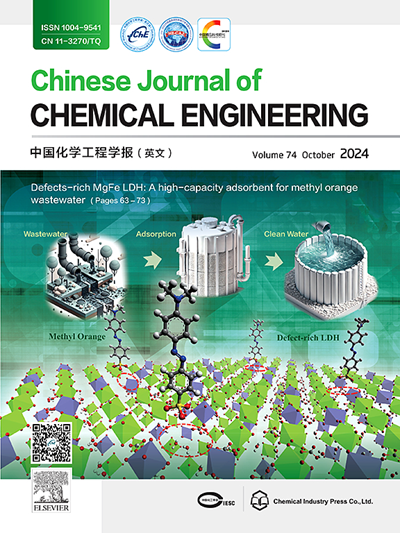Thermodynamic properties and reaction mechanism of coal reductive decomposition phosphogypsum to prepare CaO and SO2
IF 3.7
3区 工程技术
Q2 ENGINEERING, CHEMICAL
引用次数: 0
Abstract
The thermal effects, spontaneity and proceeding degree of 32 chemical reactions during coal reductive decomposition phosphogypsum (PG) to prepare CaO and SO2 are analyzed utilizing thermodynamic theory and method. The ideal reaction temperature for PG decomposition and desulfurization is 1173–1273 K. The 10 key chemical reactions controlling coal reductive decomposition PG have been selected. The heat release of critical exothermic reactions can satisfy the autothermal operation of PG decomposition and desulfurization process. Meanwhile, the spontaneity of oxidation reactions has thermodynamically priority over reduction reactions. But the reaction mechanism shows that the oxidation of CaS by O2 is in parallel competition with the reduction of CaSO4 by CO and C. Furthermore, clarifying the regulatory mechanisms of PG decomposition temperature and reaction atmosphere (reducibility and oxidation) is beneficial for maximizing the production of CaO and SO2.

求助全文
约1分钟内获得全文
求助全文
来源期刊

Chinese Journal of Chemical Engineering
工程技术-工程:化工
CiteScore
6.60
自引率
5.30%
发文量
4309
审稿时长
31 days
期刊介绍:
The Chinese Journal of Chemical Engineering (Monthly, started in 1982) is the official journal of the Chemical Industry and Engineering Society of China and published by the Chemical Industry Press Co. Ltd. The aim of the journal is to develop the international exchange of scientific and technical information in the field of chemical engineering. It publishes original research papers that cover the major advancements and achievements in chemical engineering in China as well as some articles from overseas contributors.
The topics of journal include chemical engineering, chemical technology, biochemical engineering, energy and environmental engineering and other relevant fields. Papers are published on the basis of their relevance to theoretical research, practical application or potential uses in the industry as Research Papers, Communications, Reviews and Perspectives. Prominent domestic and overseas chemical experts and scholars have been invited to form an International Advisory Board and the Editorial Committee. It enjoys recognition among Chinese academia and industry as a reliable source of information of what is going on in chemical engineering research, both domestic and abroad.
 求助内容:
求助内容: 应助结果提醒方式:
应助结果提醒方式:


